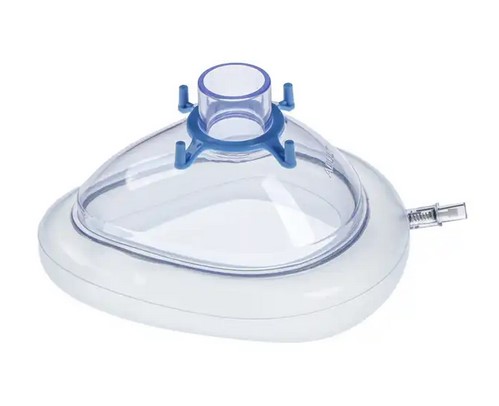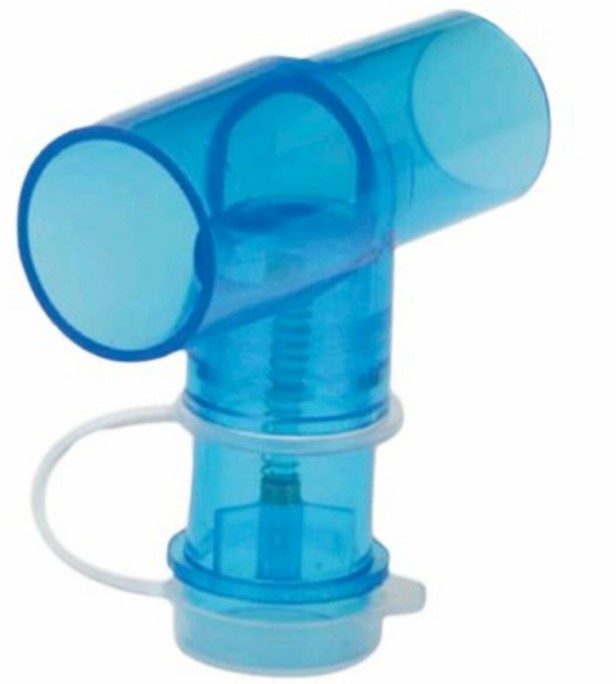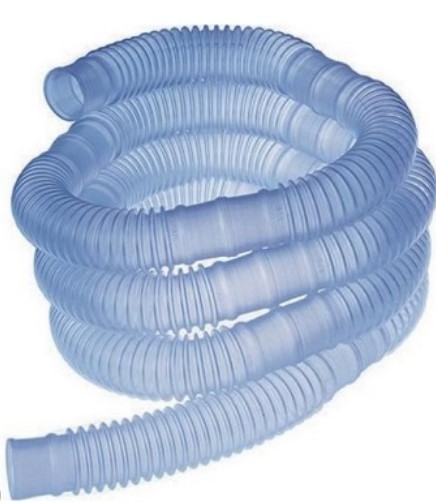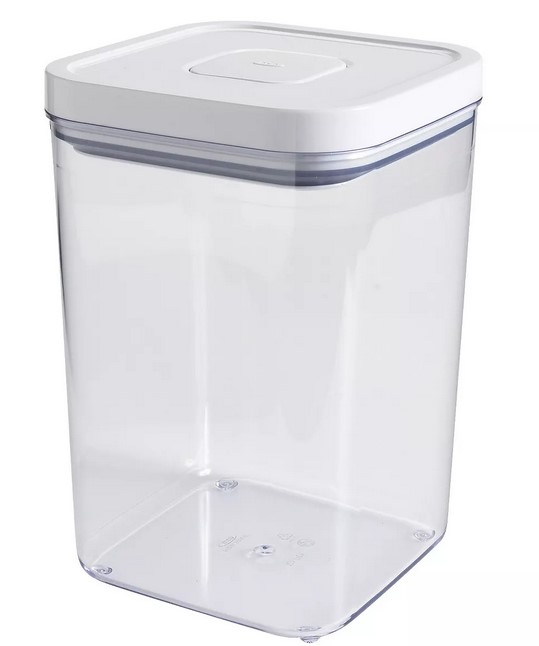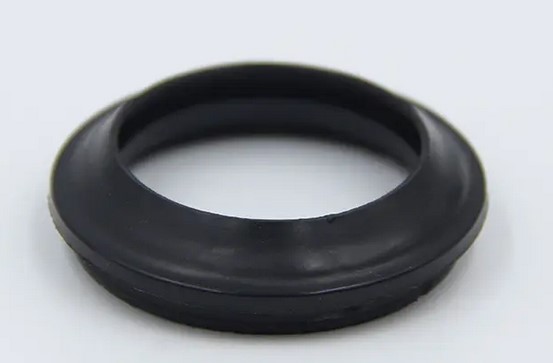Smallwood Respirator
Respirator Device
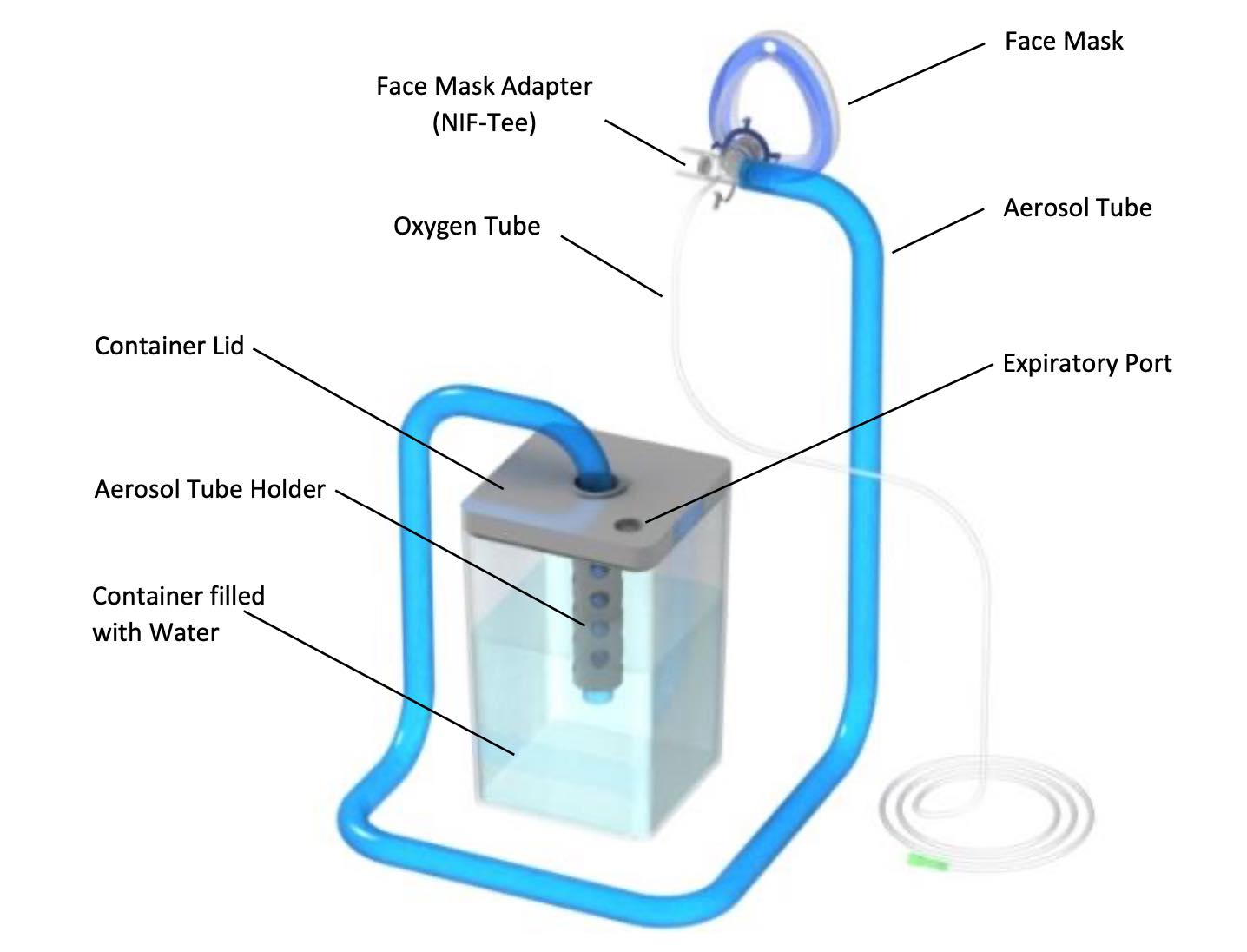
Features and Benefits
Simple, Effective, Low Cost, Portable
Non-invasive External Use
No external electricity or power needed
Clinical trial validated
Easy to Use and Administer
Easy to Maintain and Disinfect
Easy to Deploy in Mobile Clinics
Easy adjustment of EPAP levels
Helps improve Blood Oxygen Saturation levels
Helps reduce Respiratory Breathing Distress
Helps improve lung oxygenation, strength and capacity
Helps improve breathing for Emphysema, COPD patients
Helps manage infectious pneumonia
Helps manage asthma symptoms
Helps reduce need for mechanical ventilators
Helps patients wean out of mechanical ventilators
Helps patients recover from general anesthesia
Helps early Covid intervention
Helps contain Covid spread
Helps with maternal breathing during childbirth
Standard Parts
Notes
An exhaust tube should be provided that extends from expiratory port to the floor to minimize dispersal of viral-laden aerosols. CAUTION: Tube should be crush resistant. Closely monitor this tube for blockage.
A one-way valve can be added to the expiratory port. CAUTION: Valve must be oriented to allow flow outwards.
A filter (hydrophobic, hydroscopic, or bacterial) can be added to the expiratory port. CAUTION: Closely monitor any filters for saturation. Saturated filters should be replaced immediately to prevent blockage of port.
Easy Assembly
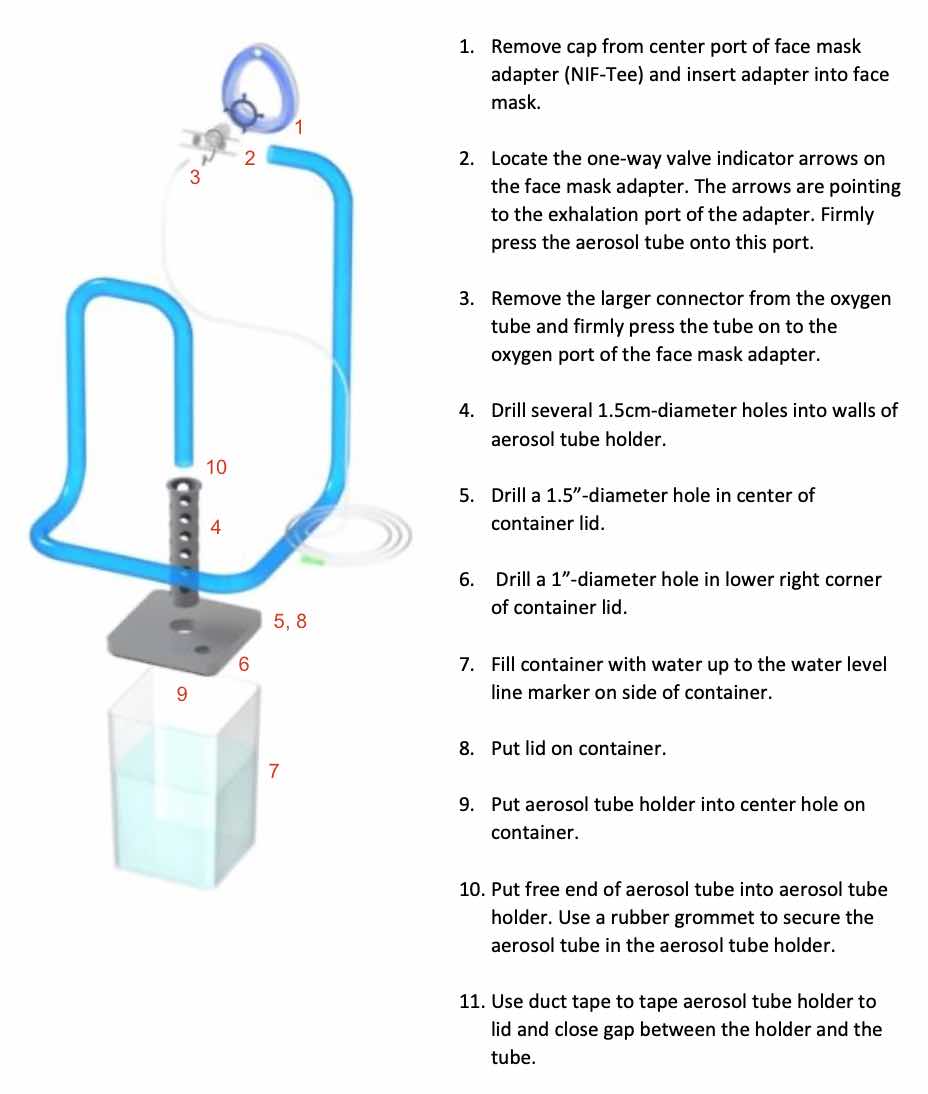
Calibrate
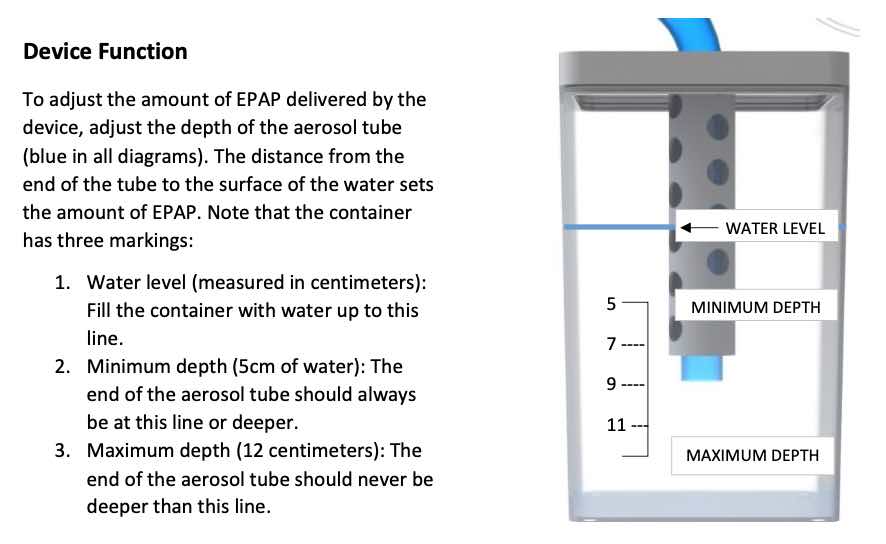
Cautions
Patient exhalation should bubble from aerosol tube end in container.
A lack of bubbles indicates air leakage or blockage.
Check face mask seal for leakage.
Check efficacy of the one-way adapter valve on face mask,
Check connection points between face mask, adapter valve, aerosol tubing.
Expiratory port on the container lid should never be blocked.
Blockage may affect EPAP levels and compromise aerosol containment.
Inhale
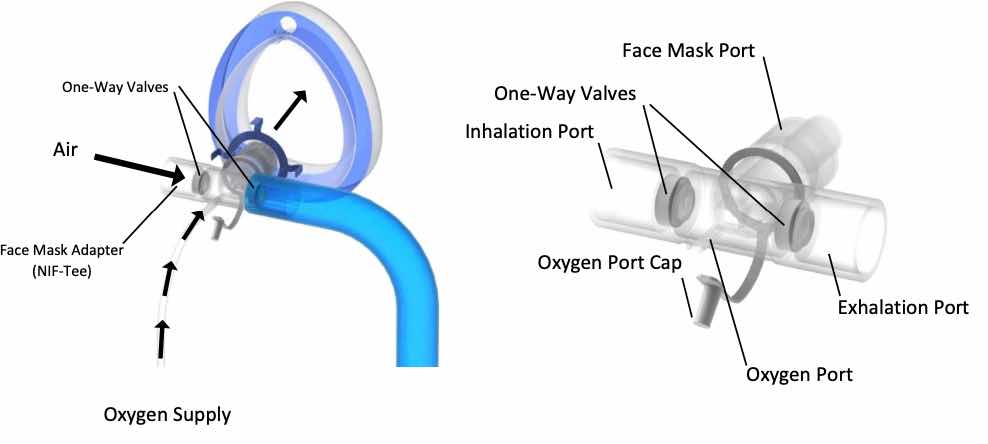
Exhale
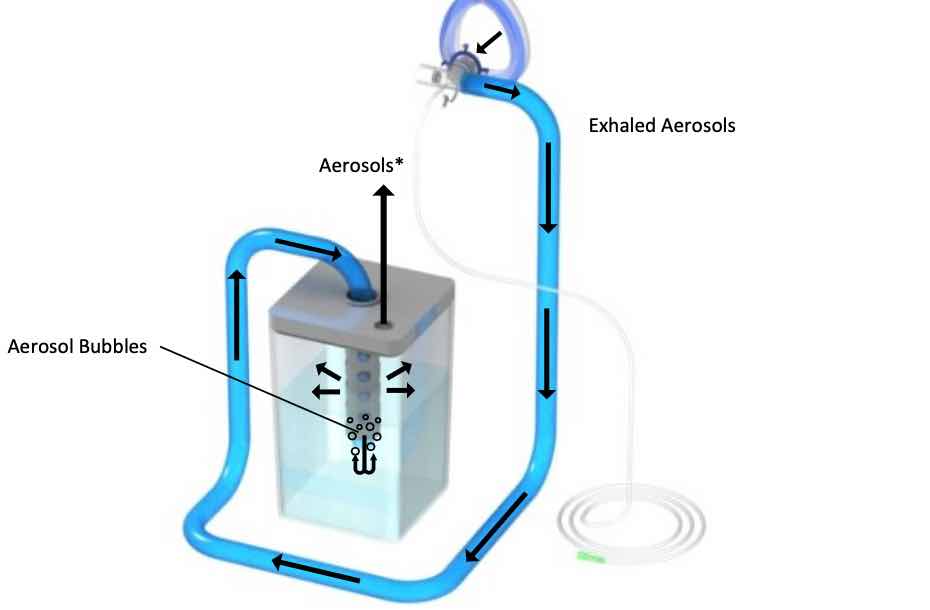
Disinfect
Disinfecting Options
Disinfect Unit after each use
Wear PPE. Minimally Facemask, Gloves and Goggles while disinfecting.
Wash the unit with soap (e.g. liquid dish soap) and clean water.
Rinse the unit completely with clean water (boiled and cooled water)
Disinfect unit to inactivate any remaining pathogens.
Stabilized hydrogen peroxide (6%) if available. See link.
Sodium hypochlorite (5.25% diluted ) if available. See link.
Let unit air dry on a clean towel or cloth.
Store unit dry in closed packages.
Summary: Wash with soap and clean water, rinse, disinfect, rinse (if chemical method), dry and store
Use Demo
Patient Screening
Baseline Profile
Age, Gender, Height, Weight
Health history
Medications History
Diabetics, Smoking, Alcohol, Allergy History
Family History
Baseline Measurements
Finger Pulse Oximeter SPO2 Reading
Body Temperature Reading
Blood Pressure Reading
Blood Sugar Reading
Lung Ultrasound Results - if available
Lung Function Results - if available
Baseline Respiratory Symptoms
Low Blood Oxygen Saturation levels (Pulse Oximeter)
Signs of difficulty in breathing
Signs of Acute Respiratory Distress
Signs of Pneumonia
Signs of Covid
Signs of Asthma
Signs of Emphysema or COPD
Awaiting allocation of ventilators
Needing to wean out of ventilators
Recovering from general anesthesia
Women at childbirth needing breathing assistance
Screening
If Life Threatening - Direct patient to nearest Emergency Care
If NOT Life Threatening - Administer Respirator under Nurse Supervision
Calibrate Respirator Water Depth for Patient Need
Monitor Patient Response (Oxygenation and Breathing Comfort)
Adjust Respirator Water Depth for Patient Need
Disinfect Respirator after each use
Record patient response and recovery history
Disinfecting
Disinfect Respirator Unit after each use
Wear Facemask, Gloves and Goggles while disinfecting.
Wash the unit with soap (liquid dish soap) and clean water.
Rinse the unit completely with clean water (boiled and cooled water)
Disinfect unit to inactivate any remaining pathogens.
Stabilized hydrogen peroxide (6%) if available. See link.
Sodium hypochlorite (5.25% diluted ) if available. See link.
Let unit air dry on a clean towel or cloth.
Store unit dry in closed packages.
Summary: Wash with soap and clean water, rinse, disinfect, rinse (if chemical method), dry and store
Reference
Clinical Trials
Smallwood Adult Positive Expiratory (APEX) support device has been proven effective in clinical trials at the University of Ghana School of Medicine and Korle Bu Teaching Hospital with successful recovery outcome for patients with Mild to Moderate Respiratory Distress symptoms. Respirator units were deployed at rural health clinics in Ghana.
Patient 1
A 23-year-old lady was admitted to the ICU for post cardiac arrest care. She had a cardiac arrest during an emergency caesarean section on account of imminent eclampsia done under a spinal anaesthesia. She was on ventilator support for 18 days being managed for sepsis and multi-organ dysfunction (hypoxic ischaemic encephalopathy, ARDS, renal impairment). It was difficult weaning her off the ventilator and had failed spontaneous breathing trials. She was comfortable and maintained good oxygenation on the ventilator with the following settings: Mode: BiPAP, FiO2 : 0.4, PEEP: 5cmH2O, Pinsp: 5cmH2O and Rate: 10/min. The most outstanding clinical concern about this patient was tracheal morbidity on account of the prolonged intubation and the fact that maintaining her oxygen saturation within clinical range tracheostomy is unavoidable. Extubating and offering non-invasive ventilation was a solution but a CPAP machine and masks were not available. To prevent ventilator dependency syndrome, the patient was extubated and placed on the Smallwood Adult Positive Expiratory (APEX) support device with a CPAP of 10cmH2O using an anaesthetic face mask with harnesses. Patient did well on the APEX device. Remained haemodynamically stable, oxygenating adequately without signs of fatigue. She was gradually weaned off the CPAP over 26 hours. Variation in Peripheral Saturation of Oxygen (SpO2), Heart Rate (HR) and Respiratory Rate (RR) during the use of Smallwood APEX device are presented.
Patient 2
A 29-year-old morbidly obese (BMI = 38.3Kgm-2) female, newly diagnosed diabetic, presented for incision and drainage of a right breast abscess. She was afebrile, had reduced breath sounds in the lung bases but no added sounds were auscultated. Preoperative saturations on room air were 91-92%. Chest X-ray showed basal atelectasis. Patient had a general anaesthesia with endotracheal intubation and muscle relaxation. She received volume-controlled ventilation with a PEEP of 8cmH2O. Anaesthesia was uneventful. Surgery lasted 50 minutes on account of extensive abscess cavities in a huge breast. Approximately 800mls of pus was drained. Postoperatively, despite adequate reversal, on resumption of the spontaneous ventilation, the patient was observed to have increased work of breathing, heart rate rapidly increased above 150bpm and expired tidal volumes decreased to 4ml/Kg of ideal body weight. Without PEEP saturations dropped below 80%. The patient was propped up with a greater than 60° head up position. Addition of a PEEP of 10cmH2O improved saturations to 94%. An APEX support device was thus connected to the patients ET tube with a CPAP of ~ 10cmH2O. Saturations were maintained on the APEX device between 93 – 95% and the heart rate dropped to 120bpm within a few minutes. Fifteen minutes after instituting APEX support device therapy, the patient became fully conscious, begun to struggle and attempted to self-extubate. A decision was taken to extubate the patient and put her on APEX support device via an anaesthetic face mask with harnesses. Patient did well. Saturations gradually improved to 100%, heart rate settled between 80-92bpm. Work of breathing became normal and patient was successfully weaned off CPAP over ~5 hours. Changes in saturations, heart rate and respiratory rate while she was on the Smallwood device has been recorded.
Pressure Trace
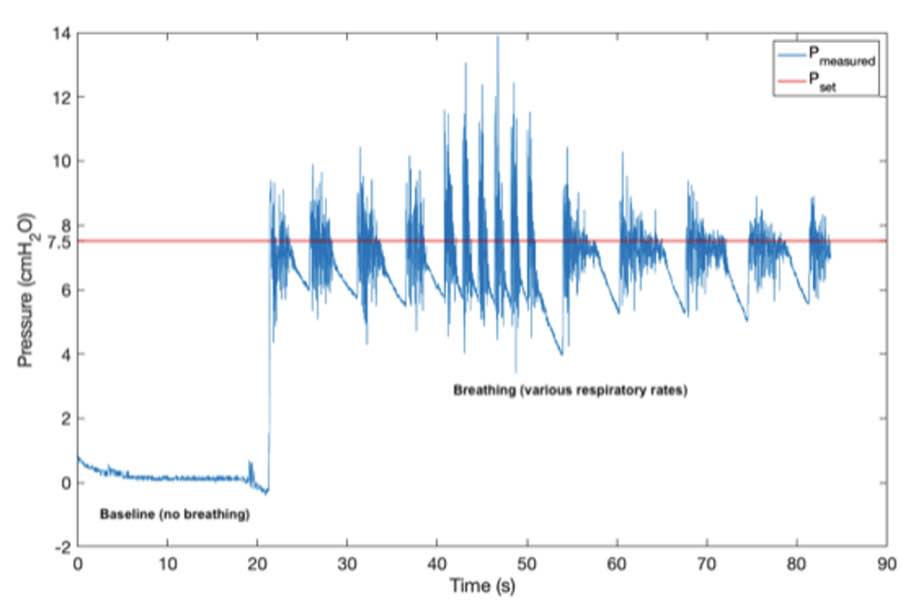
Patient Vitals
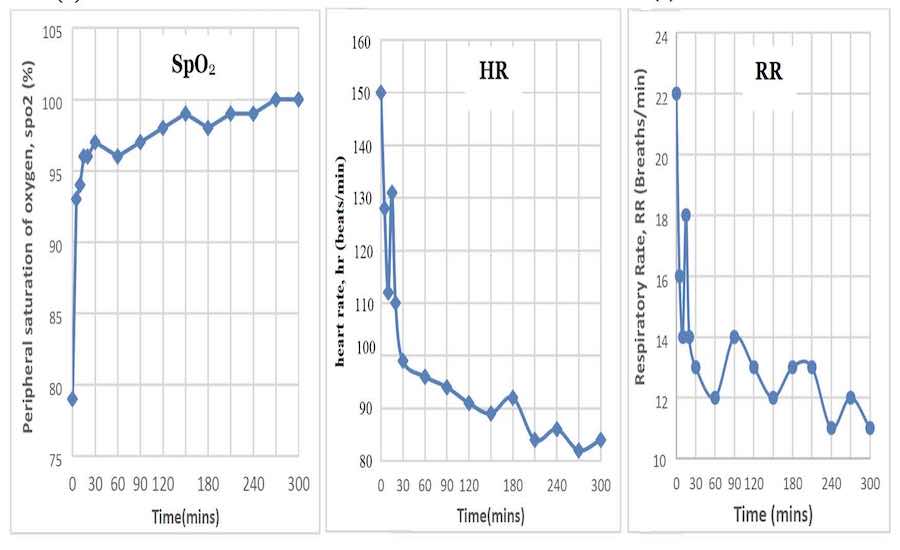
Excerpts from clinical trial report draft. University of Ghana School of Medicine. Korle Bu Hospital.
Patient Setup
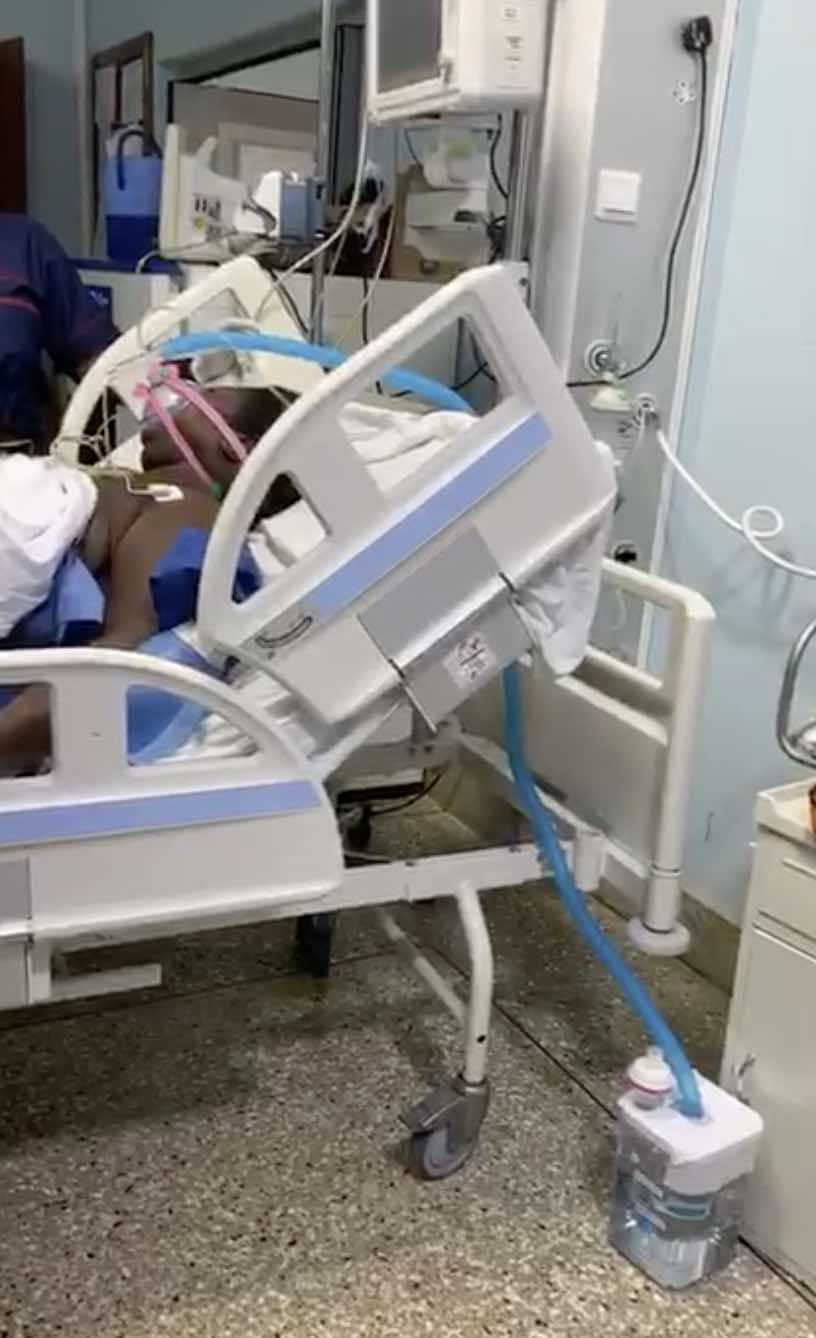
Principals
Dr Craig Smallwood (late)
Inventor of Respirator
Assistant Professor of Anesthesia
Harvard Medical School
25 Shattuck St
Boston, MA 02115 USA
Dr Lee Makowski
Professor, Bioengineering
Chemistry & Chemical Biology
Northeastern University
805 Columbus Ave
Boston, MA 02115 USA
Dr Robert Djagbletey et el
Korle Bu Hospital Ghana
Dr Fred Mcbagonluri
Academic City University Ghana
Dr Bright Ohene
Northeastern University USA
C Somanathan
President & CEO
BioSerf.com
Vaayoo.org
450 S Abel St, #360260
Milpitas, California 95036 USA
Deployments
